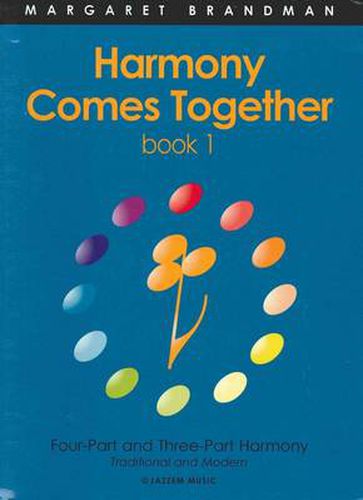Readings Newsletter
Become a Readings Member to make your shopping experience even easier.
Sign in or sign up for free!
You’re not far away from qualifying for FREE standard shipping within Australia
You’ve qualified for FREE standard shipping within Australia
The cart is loading…






This title is printed to order. This book may have been self-published. If so, we cannot guarantee the quality of the content. In the main most books will have gone through the editing process however some may not. We therefore suggest that you be aware of this before ordering this book. If in doubt check either the author or publisher’s details as we are unable to accept any returns unless they are faulty. Please contact us if you have any questions.
Harmony Comes Together is designed to equip the student with the necessary skills to write both four-part and three-part classical harmony and to cross the divide between
contemporary popular, jazz and contemporary classical writing styles with ease and understanding, all the while giving experience in skills required for both classical
and contemporary examination syllabi. This harmony method is the part of an integrated course devised by Margaret Brandman which provides materials for ear-training (audio and workbooks), theory, improvisation, technique and repertoire. Harmony Comes Together Book 1 is best by those who have completed both Margaret Brandman’s Contemporary Theory Workbook– Book 2 and the first sectionof Margaret Brandman’s Contemporary Chord Workbook– Book One.
Key features of this book are:
1) The Gestalt approach – using the gestalt (whole view) of the topic of harmony, students are equipped to see, hear and understand the chords in context.
2) An emphasis on the understanding of the cycle of fifths and chord tables
3) The understanding of root progressions which helps the student of harmony make connections between various progressions
and the movement of the parts. This also imparts the knowledge of the effect of the progressions: static, weak or strong
4) The use of colour coding and graphics to impart concepts and illustrate ideas
5) The use of various types of labelling from both the British System and the American system, so that information in this book can be used with multiple examination syllabi
6) The use of both traditional system of figuring for chords and modern chord symbols to make the link between old and new systems of music notation and harmonic
understanding.
7) The awareness of sounds in both classical and popular music
8) The encouragement for the student to play and listen to the progressions
and to interpret them with modern rhythms
-
$9.00 standard shipping within Australia
FREE standard shipping within Australia for orders over $100.00
Express & International shipping calculated at checkout
This title is printed to order. This book may have been self-published. If so, we cannot guarantee the quality of the content. In the main most books will have gone through the editing process however some may not. We therefore suggest that you be aware of this before ordering this book. If in doubt check either the author or publisher’s details as we are unable to accept any returns unless they are faulty. Please contact us if you have any questions.
Harmony Comes Together is designed to equip the student with the necessary skills to write both four-part and three-part classical harmony and to cross the divide between
contemporary popular, jazz and contemporary classical writing styles with ease and understanding, all the while giving experience in skills required for both classical
and contemporary examination syllabi. This harmony method is the part of an integrated course devised by Margaret Brandman which provides materials for ear-training (audio and workbooks), theory, improvisation, technique and repertoire. Harmony Comes Together Book 1 is best by those who have completed both Margaret Brandman’s Contemporary Theory Workbook– Book 2 and the first sectionof Margaret Brandman’s Contemporary Chord Workbook– Book One.
Key features of this book are:
1) The Gestalt approach – using the gestalt (whole view) of the topic of harmony, students are equipped to see, hear and understand the chords in context.
2) An emphasis on the understanding of the cycle of fifths and chord tables
3) The understanding of root progressions which helps the student of harmony make connections between various progressions
and the movement of the parts. This also imparts the knowledge of the effect of the progressions: static, weak or strong
4) The use of colour coding and graphics to impart concepts and illustrate ideas
5) The use of various types of labelling from both the British System and the American system, so that information in this book can be used with multiple examination syllabi
6) The use of both traditional system of figuring for chords and modern chord symbols to make the link between old and new systems of music notation and harmonic
understanding.
7) The awareness of sounds in both classical and popular music
8) The encouragement for the student to play and listen to the progressions
and to interpret them with modern rhythms
-